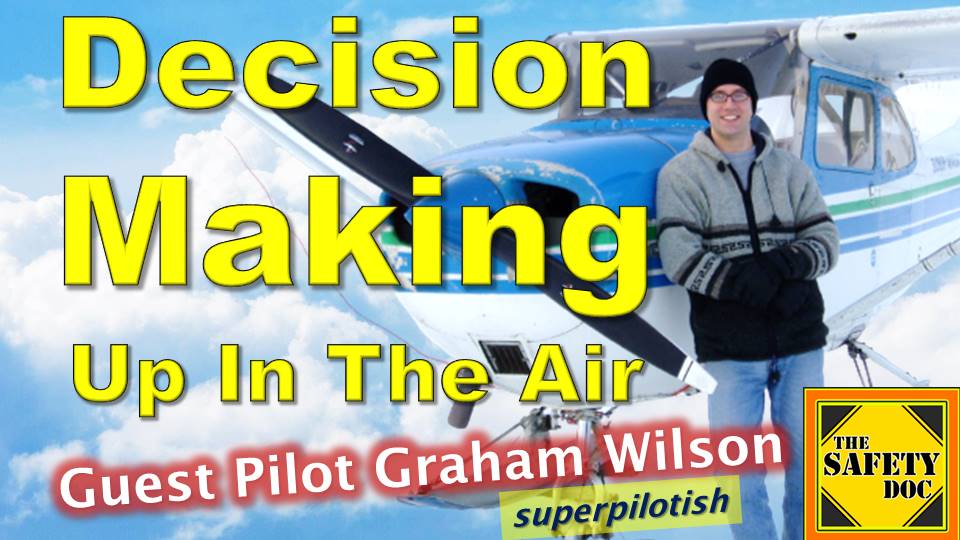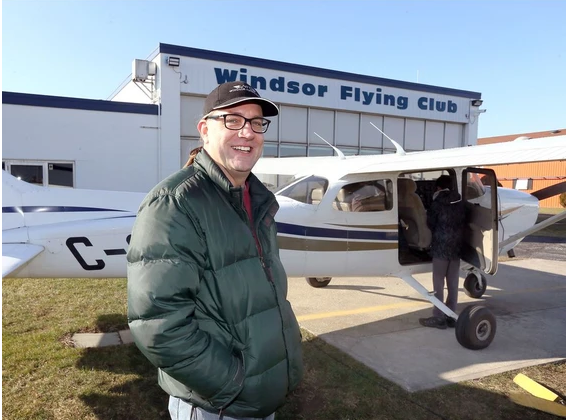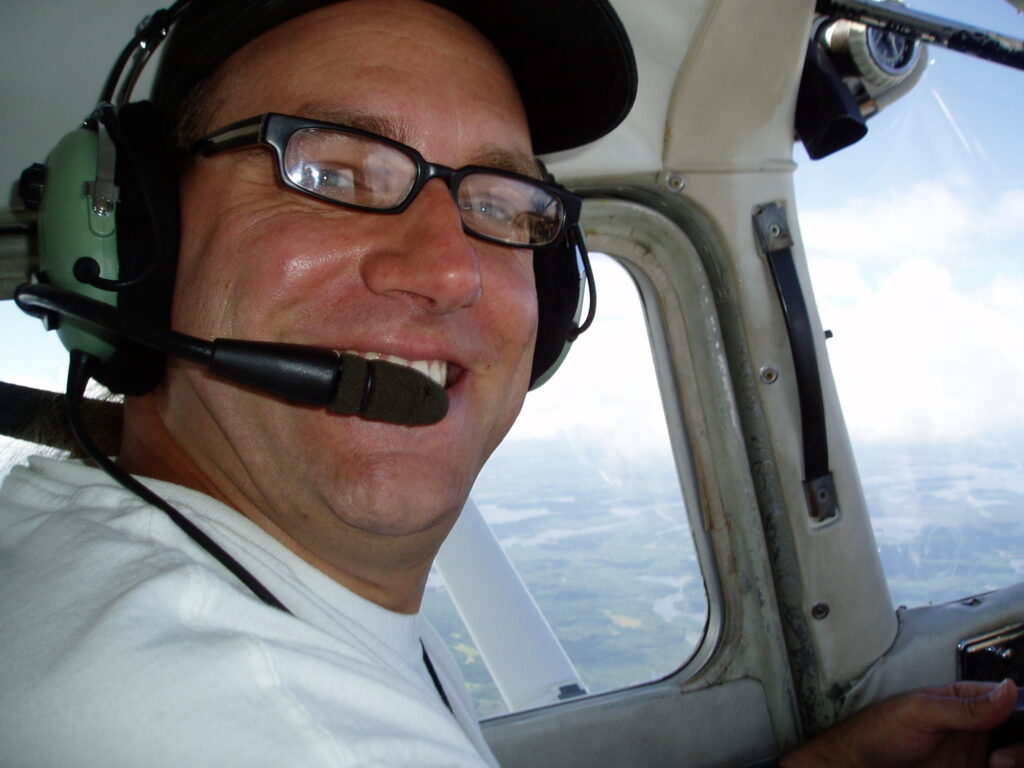Decision Making Up in the Air | Pilot Graham Wilson | The DECIDE model | SDP186
Graham Wilson is a freelance flight instructor in Windsor, Canada. He produces aviation-themed content for his ‘Superpilotish’ YouTube channel and website superpilotish.com. Graham has worked as a Chief Flight Instructor, Chief Pilot, Operations Manager and was formerly an accredited Transport Canada Pilot Examiner. He has worked various jobs in manufacturing, the service sector and was formerly a School Board Trustee. In addition to Commercial Pilot qualifications, he is also a certified General Machinist and holds a Bachelor of Arts in Psychology and a Diploma in Aviation Technology. His interests are flight instruction, motorcycles, gardening and camping. The show’s thumbnail shows Graham in a plane he rented to go flying off a frozen lake near Sudbury, Ontario. They made the runway markings by spacing old Christmas trees 200 feet apart on the lake, then packed the snow by running snowmobiles up and down the landing strip.
In this interview, Graham, a from-real-experiences storyteller, talks about decision making for pilots, including ‘The DECIDE Model’; non-punitive mistake reporting; obvious or nuanced risks pilots encounter during flying (including toilet paper in the fuel tank); and benefits and drawbacks of at-home flight simulator software for aspiring pilots.

DIRECT LINK to MP3 of this Episode: https://tinyurl.com/SDP186-AUDIO
DECIDE
DECIDE is an acronym from flight literacy training. It is a six-step risk management loop process, similar to simulated annealing, that provides the pilot with a logical way of making decisions during atypical situations. DETECT that a change has occurred. This requires the pilot to exercise situational awareness and baseline awareness. ESTIMATE the need to counter or react. A blinking dash light might only require that it be noted for further scrutiny after landing. CHOOSE the desired outcome. This might be to return to the airport. IDENTIFY actions to control the change. Review emergency checklists, which might be “turn things off and then turn them back again,” and then communicate the problem to the airport. DO (perform) the action. The tower might ask if you want to declare an emergency. If you do, the tower will give you priority to land and might send out emergency services. As Graham reminds us, always be communicating your observations and actions to others. There is a tendency during a crisis for people to not talk while they act. Pilots are taught to describe their actions as they do or plan them, but this isn’t inherent to non-pilots facing uncertainty. EVALUATE the success of the action.

NON-PUNITIVE MISTAKE REPORTING. Graham underscores that pilots applying their professional discretion to report a mistake will not encounter blowback of blame or shame. Measuring information-sharing won’t dig to the root causes. Why did the failure occur? Did a part fail? Did software fail? Is there a flaw in a larger system? Should there be more or different training? If it was a mistake by the pilot, what contributed to that mistake and what redundancies might be put in place to account for it. Focus on a better system and you’re working together. Graham adds that a pilot won’t be billed for the airport’s emergency services. Doc noted that billing for emergency services is common in America, from search and rescue to firefighting, and that some people refuse emergency care in anticipation of huge bills.
DUMB DESIGN OF WWII PLANES. Cliff Kuang (2019) wrote an article for WIRED in which he described how WWII pilots were blamed for crashing their B-17 Flying Fortresses. In one instance, a confused pilot jumped into a new plane during a bombing raid to find the instruments completely re-arranged. He managed to dart around the runway until the attack was over. However, the true cause of many of the pilot-attributed crashes was actually due to the design of the plane, or “designer error.” “The reason why all those pilots were crashing when their B-17s were easing into a landing was that the flaps and landing gear controls looked exactly the same and felt exactly the same.” The ingenious solution was to create a system of distinctively shaped knobs and levers that made it easy to distinguish all the controls of the plane merely by feel, so that there’s no chance of confusion even if you’re flying in the dark. Controls for the wheels are shaped like the plane’s wheels and flap controls are shaped like wing flaps. It worked, and that universal design of cockpit controls is still present in new planes.
BIGGEST RISK TO A PILOT. The top risk is running out of fuel, with adverse weather being a close second. But, using a cheaper fuel, such as an 89 octane with 10% ethanol, might be a subtle risk to a pilot. Depending upon how long the fuel has been in the tank, it might begin to absorb moisture and also congeal. This could impair the plane’s fuel system during flight. Ego is also a risk. There’s no shame in getting cleared for takeoff and then aborting the flight as you stare at a dark storm cloud beyond the runway. Flight instructors will model this practice of confident decision making. It’s the primacy effect. The first time the student sees the instructor cancel a flight due to iffy weather, for example, is something that is burned into the student’s brain.

AT-HOME SIMULATOR SOFTWARE – IS IT GOOD? Graham fields these questions often from aspiring pilots. He notes that such programs fuel students’ enthusiasm for flying and can help them with an early grasp of terminology and some basic operations of the plane. However, any simulators will not prepare a student to fly a plane.
This is episode 186 of The Safety Doc Podcast published on 09-13-2022. This podcast and blog post represent the opinions of David P. Perrodin and his guests to the show. The content here is for informational purposes only. Please consult with your safety professional regarding the unique needs of yourself or your organization.
FOLLOW
- Watch this episode on “The Safety Doc” YouTube channel https://tinyurl.com/SDP186-VIDEO
- Listen to this episode on PodBean MP3 https://tinyurl.com/SDP186-AUDIO
- Apple Podcasts http://tinyurl.com/SafetyDocApplePodcasts
- SAFETY DOC WEBSITE & BLOG safetyphd.com
- Follow David & The Safety Doc Podcast on Twitter @SafetyPhD
- Email Dr. Perrodin thesafetydoc@gmail.com
Purchase Dr. Perrodin’s books
School of Errors – Rethinking School Safety in America
The Velocity of Information – Human Thinking During Chaotic Times
